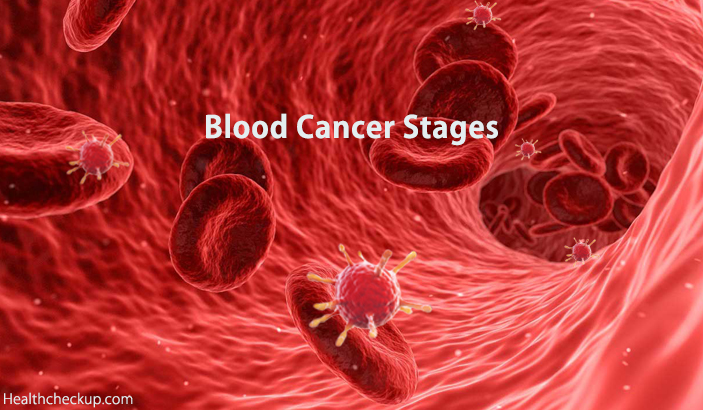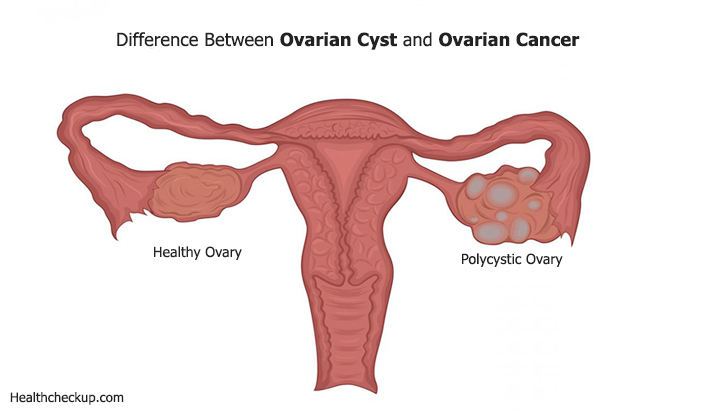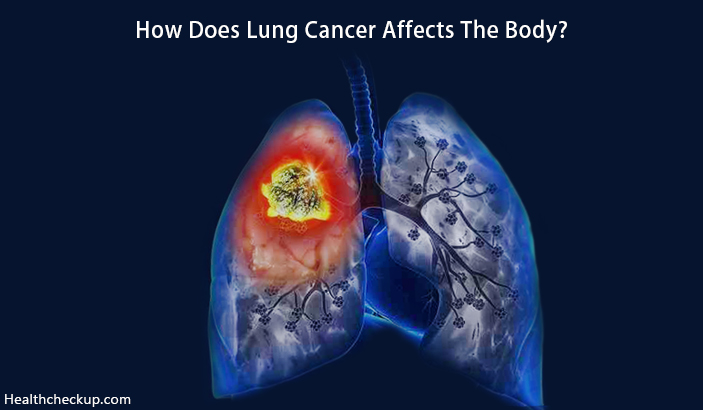Blood cancer covers a large variety of malignancies of the blood and its components. Since cancer itself suggests an extremely complex disease condition with a huge array of symptoms and clinical presentations, staging of blood cancers becomes important primarily for the purpose of understanding and diagnosis.
In the human body, all types of blood cells are formed in the bone marrow from hemopoietic stem cells. The process by which normal blood cells are formed and matured is called Hemopoiesis.
Hemopoietic Stem Cells Have Two Variants
- Myeloid Progenitor Cells – These cells areresponsiblee forthe formation of
- Thrombocytes (platelets)
- Monocytes/ Acrophages
- Eosinophils
- Basophils
- Neutrophils
- Lymphoid Progenitor Cells – These cells are responsible for the formation of
- B-lymphocytes/ Plasma cells
- T-lymphocytes
- Natural Killer cells
Blood cancer types are based on the types of blood cells or the type of progenitor cells involved. Based on their involvement, blood cancer can be understood under 3 major terms
- Leukemia – In this type of blood cancer there is an excess production of immature white blood cells. Leukemia can be acute or chronic.
- Lymphoma – In this type of blood cancer there is excessive production of B-lymphocytes and T-lymphocytes.
- Myeloma – In this type of blood cancer there is excessive production of B-lymphocytes or plasma cells.
Leukemias and myelomas begin to develop inside the bone marrow and therefore they interfere with the ability of bone marrow to form normal blood cells. Myelomas tend to affect bones and weaken them.
Lymphomas develop in the lymph tissues anywhere in the body. Lymphatic system is responsible for fighting against infection. So in lymphoma, the ability of the body to fight against infections is reduced.
Blood Cancer Stages
Staging of Blood Cancer is Essential Because
- It becomes easier to differentiate and to understand how the disease has progressed.
- Curability and treatment options can be chosen based on the stage of cancer.
- If a patient is on treatment, staging helps to understand its curability.
- Patients also show certain signs and symptoms as per stages. So stages tell whether the blood cancer is aggressive or at a milder stage.
- Apart from signs and symptoms, certain blood investigations or scans may be required at each stage of blood cancer to monitor its progress or regression.
- Staging of cancer helps in the understanding prognosis of blood cancer.
Just like each blood cancer occurs because a different blood cell is affected; similarly, each type of blood cancer has a different staging.
Staging For Leukemia
| Type of Leukemia |
Staging of Leukemia |
Survival Rates |
| Acute Myeloid Leukemia
In this type of blood cancer, there is an excess production of white blood cells (excluding B and T lymphocytes and Natural killer cells)
|
French-American-British Classification of AML
M0 – Minimally differentiated acute myeloblastic leukemia M1 – Acute myeloblastic leukemia without maturation M2 – Acute myeloblastic leukemia with maturation M3 – Acute promyelocytic leukemia M4 – Acute myelomonocytic leukemia M4eos – Acute myelomonocytic leukemia with eosiniphilia M5 – Acute monocytic leukemia M6 – Acute erythroid leukemia M7 – Acute megakaryocytic leukemia |
5-year Survival Rates for Stages of AML
M0 – 20.8% M1 – 32.2% M2 – 38.9% M3 – 61.5% M4 – 26.4% M4eos – 56.0% M5 – 22.2% Unclassified – 28.6%
|
| Chronic Lymphocytic Leukemia
In this type of cancer, there is an excess production of abnormal B-lymphocytes. |
Rai’s Staging System For CLL
0 – Absolute lymphocytosis (morethan 15,000/cu.mm) without anemia, thrombocytopenia, lymph node enlargement, hepato-splenomegaly I – Absolute lymphocytosis with lymphadenopathy II – Absolute lymphocytosis with enlarged liver or spleen without without lymphadenopathy III– Absolute lymphocytosis with anemia (Hb <11gm %) with or without enlarged lymph nodes, liver or spleen. IV – Absolute lymphocytosis with thrombocytopenia (<100,000 cu.mm) with or without anemia, enlarged lymph nodes, liver or spleen. |
Mean overall 5-year survival rate for CLL in India is about 51% |
| Chronic Myeloid Leukemia
|
This type of leukemia has 3 stages
Chronic Phase – Mild symptoms such as fatigue, left sided abdominal pain or hip pain. Nearly 85% of patients are present in this phase. If untreated, it progresses into the accelerated phase.
Accelerated phase – Criteria for this phase ● >20% basophils in blood and bone marrow ● 10-19% myeloblasts in bone marrow or blood ● Platelets <100,000/ cu.mm not related to therapy ● Platelets >10,000,000/ cu.mm not responding to therapy ● Progressive enlargement of the spleen ● Progressive increase in white blood cell count, not responding to therapy
Blast Crisis – This is the final stage of chronic myeloid leukemia. Disease progresses rapidly similar to acute leukemia. This stage is associated to a poor prognosis. Criteria to diagnose this phase ● >20% lymphoblasts or myeloblasts in bone marrow or blood ● Formation of chloroma – a mass of leukemia outside the bone marrow ● Large clusters of blasts on bone marrow biopsy |
Drugs that were useful in treating cases of CML became available in 2001.
A research conducted over a long period of time by the American Cancer society gives a 5-year survival rate for CML to be 90% after starting treatment for the same.
|
Staging For Lymphomas
Lymphomas are of two varieties
- Hodgkin’s Lymphoma
- Non-Hodgkin’s Lymphoma
Since in lymphoma, there is lymph node involvement rather than the bone marrow, staging for both varieties of lymphoma is the same.
|
Type of Lymphoma |
Staging of Lymphoma | Survival Rates |
| Hodgkin’s and Non-Hodgkin’s Lymphoma
In Hodgkin’s lymphoma, the affected lymph tissues show the presence of Reed-Sternberg cell. This feature differentiates it from Non-Hodgkin’s Lymphoma
|
Stage 1 – Involvement of one lymph node region in any part of the body
Stage 2 – Involvement of two or more lymph node regions on the same side of diaphragm (above or below) Stage 3 – Involvement of lymph node regions on both sides of the diaphragm Stage 4 – Involvement of other organs without affecting lymph nodes (widespread disease)
|
5-year survival rate of Hodgkin’s lymphoma based on stages as per the National Cancer Institute:
Stage 1 – 90% Stage 2 – 90% Stage 3 – 80% Stage 4 – 65% 5-year survival rate for NHL is 70%. 10-years survival rate for NHL is 60% |
| Burkitt’s Lymphoma
This lymphoma is an aggressive variant on Non-Hodgkin’s lymphoma. |
St. Jude or Murphy staging scheme for Burkitt’s Lymphoma:
Stage-I – Single tumor (extra-nodal) or a single anatomical area (nodal) without involving the mediastinum or abdomen.
Stage-II – Single extra-nodal tumor with regional node involvement Two single extra-nodal tumors on the same of diaphragm. Primary gastrointestinal tumor with/without involvement of mesenteric lymph nodes
Stage-IIR – Completely resected intra-abdominal disease
Stage-III – Two single extra-nodal tumors on both sides of diaphragm All primary intra-throracic (within the lungs) tumors. All para-spinal (adjacent to the spinal cord) or epidural (at dura mater of spinal cord) tumors Extensive primary intra-abdominal disease Two or more anatomical areas on both sides of the diaphragm
Stage-IIIA – Localized but non-resectable intra-abdominal disease
Stage-IIIB – Widespread multi-organ abdominal disease
Stage-IV – Any of the above conditions with less than 25% involvement of CNS and/or bone marrow
|
5 Year Survival for Burkitt Lymphoma Is
Stage I, II – 90% Stage III, IV – 80-90% |
Staging For Myeloma
| Multiple Myeloma | Staging of Multiple Myeloma | Survival Rates |
| According to the International Staging System
In Multiple Myeloma, high level of serum beta2-microglobulin indicates high tumor mass and decreased renal function.
|
Stage-I – Serum beta2-microglobulin less than or equal to 3.5 mg/L , serum albumin >3.5g/dL
Stage-II – Values not belonging to stage-I or stage-II Stage-III – Serum beta2-microglobulin more than or equal to 5.5 mg/L |
As per American Cancer Society Statistics
5 Year Survival for Burkitt lymphoma is: Stage I, II – 90% Stage III, IV – 80-90% If the cancer has spread to distant parts of the body, 5-year survival rate is 48%. |
Medically Reviewed By
Dr. Himanshi is a Homoeopathic consultant and currently working as a lecturer in Post-graduate faculty of Homeopathy, Parul University, Vadodara. Completed BHMS and MD in Homeopathy in January 2018 and also has a clinical experience of about 6 years. Personal interests include reading, spending time with family and traveling.








